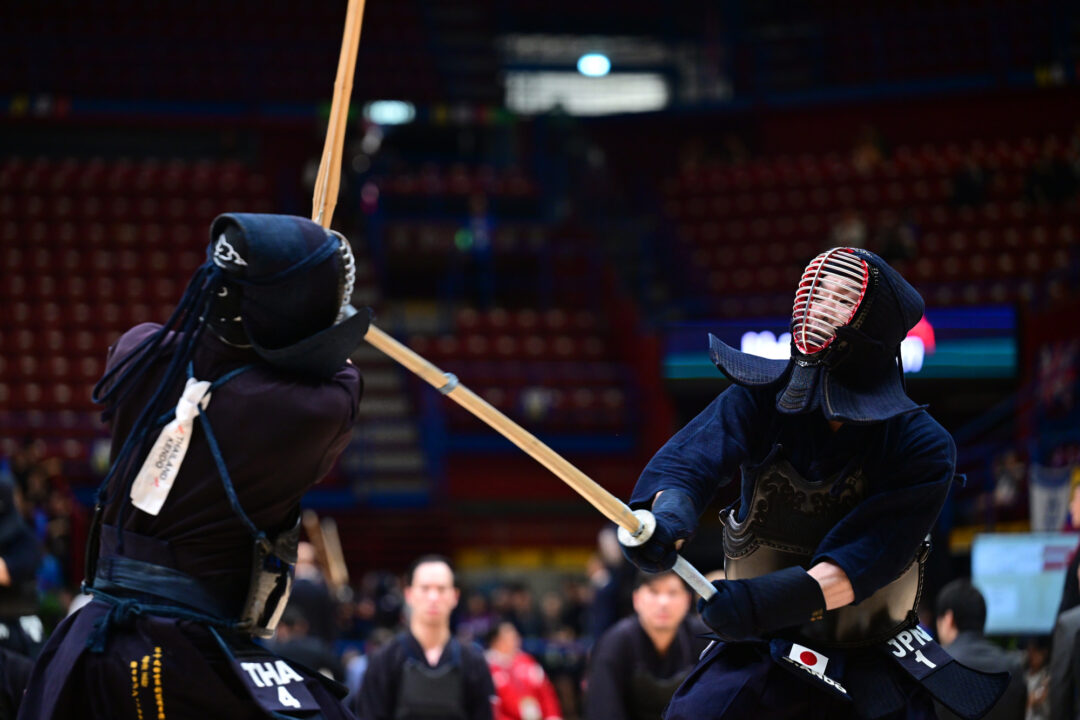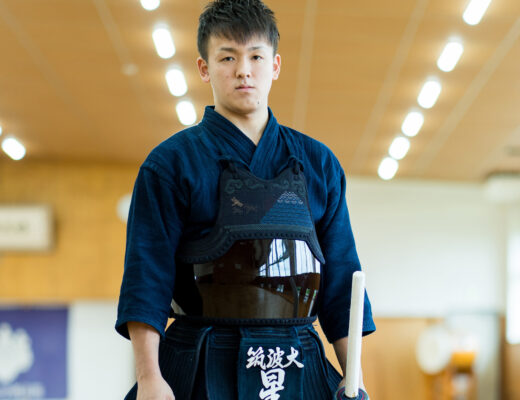KENDOJIDAI 2024.10
Composition: Teraoka Tomoyuki
Photography: Sasai Takamasa
Translation: Hoshino Maki
Twelve years since his first selection for Japan’s national team and six years since the last World Kendo Championships (WKC), Ando Sho’s path as a Kenshi has been inseparably bound with Japan’s national team. With his latest challenge as captain at the 19WKC, we dive deep into his unwavering devotion to Kendo and the profound resolve he has dedicated to the Japanese flag.
Read Part 1 here
A World Championship Title Earned Together —
With One Great Goal Achieved, What Comes Next?
At last, came the day of the team championship. With Ando at the helm, the ten men of Japan’s national team stood as one, a single unbreakable force, vowing to seize victory in Italy. From here, we delve into Ando’s own words as he takes us along the journey to becoming the world’s best.
—On the first day of the Championships, in the women’s individual event, Japan swept all top four spots. The following day saw the start of the preliminary rounds for the team events. How did you assess the team’s readiness?
“All the team members were emotionally fulfilled for the match, though we may have been a bit stiff in the preliminary round. In our match against Thailand, our Senpo, Ohira, ended in a draw, and Hoshiko settled for a single-point win. From the cheers that erupted at the slightest touch of the Shinai, we became acutely aware that we were competing on the world stage.”
—As captain, did you convey anything specific to the competitors?
“At the WKC, there’s an unspoken expectation for every member of the Japanese team to deliver a flawless two-point victory. But the reality is far from simple. I reminded my team, ‘Just because the teammate before you scored two points doesn’t mean you must follow suit—that mindset only breeds unnecessary pressure.’ Indeed, even a draw can contribute significantly to the team’s victory.”
—On the third day, the men’s individual championship was held. As in the women’s division, Japan swept the top four spots. However, there were moments when Japanese competitors conceded points to Korean players. How did you assess the team’s performance in the individual matches?
“It was evident that not only in Korea, Europe and the United States, but worldwide, the level of Kendo has risen. Each country has strong core players, and this made us reaffirm that we couldn’t take the team event for granted; it served as a wake-up call to tighten our focus. At the same time, our team members’ achievements in the individual matches provided a significant boost to our team’s momentum.”
—What was on your mind as you approached the final tournament held on the last day?
The rest of this article is only available for Kendo Jidai International subscribers!





